Water is the element of life, purity, and health. None of us can survive and stay healthy without clean water. So, that is why plumbers started creating systems for us to have access to water supply 24/7 without having any problems. Plumbers and engineers design and install systems and provide residential plumbing services to help us have a better and easier life. But what are the main components of these systems? The answer to this question is exceptionally vast. Thus, we decided to focus on today’s different types of plumbing water valves. You can always visit our blogs to learn NEW exciting things about plumbers and plumbing systems.

What are Plumbing Water Valves?
Plumbing water valves are created to partially or entirely restrict water flow through your home’s pipes. These valves are also used in commercial plumbing systems.
Plumbing water valves come in a range of various styles and types, depending primarily on how and where they will be used. This means that maybe a specific part of your system will require a form of a simple faucet valve to stop the water flow through the faucet. On the other hand, another section can require more involved plumbing water valves, such as a butterfly valve designed to be used on larger diameter piping used mainly in industrial plumbing designs.
The List of Most Important Water Valves You Need to Know
Differentiating various types of plumbing water valves can be difficult at first. Still, by learning each one individually, you can better understand the designs and uses of each water valve.
Let’s get to the real deal now.

1- Gate Valves are The Most Common Plumbing Water Valves
Plumbers definitely use gate valves for their residential plumbing services. These types of plumbing water valves allow residents to control water flow instead of switching between open and closed positions.
Due to the controlled open and close mechanism of gate water valves, these plumbing valves are perfect for homes that experience recurring water hammer issues.

2- Ball Valves are Popular Plumbing Water Valves
The second most common plumbing water valves are the ball valves. These water valves are reliable and are not prone to seizing or leaning. However, it would be best if you remembered that they do not offer the same accurate control over the water flow over time.
These water valves are widely used in residential plumbing systems and consist of a lever that can be rotated 90 degrees. With this lever, you can control a hollow half-sphere within the valve.

3- Globe Water Valves (Stop Valve)
These plumbing water valves are perfect for water lines that have larger diameters. Globe valves are more significant than gate residential plumbing valves due to their bulky internal structure.
Glob water valves have horizontal internal baffles with an opening that can be blocked or restricted by a plug that is lowered or raised by turning the valve handle.
These plumbing water valves are also suitable for users who want precise water flow control. So, they can be good alternatives to gate valves.
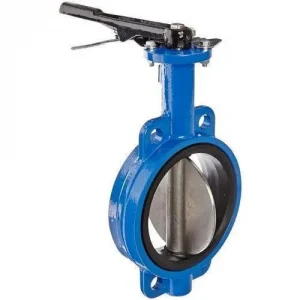
4- Butterfly Valves are Perfect for Commercial Plumbing Systems
The name butterfly valves are because of the rotating disk in these plumbing water valves. The disk inside these valves has a thick center holding the valve stem and a thin wing or fin on either side, miming the butterfly’s appearance.
When you turn the control level of butterfly valves, what you actually do is that you rotate the disk and allow it to fully or partially restrict the water flow through the valve.
The best choice for water pipes with 3 inches or larger diameters is a butterfly water valve. This means that you can rarely find these plumbing water valves in home plumbing systems. Additionally, butterfly valves come at a higher price than other home plumbing valves due to their size and style.
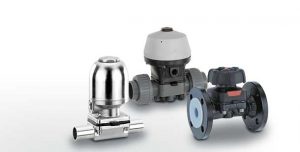
5- Diaphragm Water Valves
Diaphragm water valves are used to limit the water flow in your piping and plumbing system. These plumbing water valves have a wheel or knob that you can use to close and open the valve for the water to flow freely.
By rotating the knob or wheel, you adjust the diaphragm for flow control.

6- Pressure Relief Valves are Also Important Types of Plumbing Water Valves
Pressure relief valves do not function similarly to regular and standard water valves. These valves do not restrict or prevent water flow; instead, they protect the plumbing system by releasing steam and hot water if your system’s pressure exceeds the level it should be.
These types of plumbing water valves are generally used on hot water tanks to prevent overheating, deformation, and rupturing, which can be caused due to excessive pressure.
Pressure relief valves feature a spring mechanism that reacts to the compression and pressure when they get too high. The spring compression in these systems opens the valves to release water and steam, resulting in pressure reduction.
See water valve prices in Canada.

7- Check Valves
Check valves are not as typical as other types of plumbing water valves, and they also do not have the same ability to control or stop the water flow. But you should still use check valves in your systems. On the other hand, check valves are crucial components of any plumbing system, whether commercial or residential.
Check valves are plumbing valves that are explicitly designed to allow water to rush through the inlet section of the valve. The force of the flowing water pushes open a hinged disk in the valve system, ensuring that the water pressure is not reduced. However, this hinged disk prevents the coming water from flowing through the valve in the exact opposite direction as the imparted forces on the disk push it closed.
The primary usage of check valves is for preventing backflow in all types of plumbing systems which can lead to cross-contamination issues between your residential plumbing fixtures and appliances.
So, now you can understand that check valves are the types of water plumbing valves that are best for backflow prevention in pumps, sprinkle systems, safety applications, and other residential plumbing systems that may be at risk of intermittent backflow damage.
Note: Backflow in plumbing systems occur when the pressure within the sprinkling system or water tank and a pump is lower than the pressure within the primary water system. This is where check valves play a crucial role in your plumbing system.
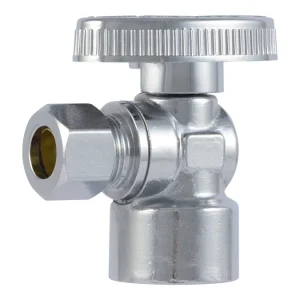
8- Supply Stop Valves
Supply stop valves are specialized water valves designed to be used with plumbing fixtures such as sinks, toilets, dishwashers, and more. These valves are called supply inlet or outlet valves and come in various types, including angles, straight, compression, and quarter turn. So, it is best to contact a professional plumber to see which type can be the best for your application.
You can find these valves on the toilet water supply lines, and they are generally used to stop the water flow to specific plumbing appliances. Supply stop valves also help plumbers isolate appliances and fixtures in your home to provide faster, easier, and better quality plumbing repairs and services.
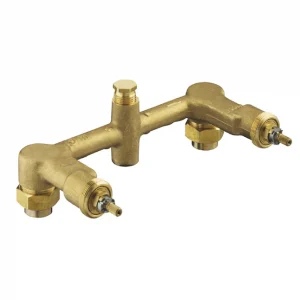
9- Faucet Water Valves
Another specialized plumbing water valve is the faucet valve, which is available in a wide array of styles. However, the primary function of these valves is to allow you to control water flow through your faucets, shower, or tub.
Different Styles of Faucet Water Valves Include:
- Ball valves: Simple mechanism used for turning the water on and off with little room.
- Cartridge Valves: Mostly used for showers to control the water flow.
- Ceramic Disc Valves: These valves consist of two ceramic disks that rotate against each other.
- Compression Valves: These water valves utilize a rod and plug for sealing the valve seat.
- Globe Valves: The good example of a compression valve.
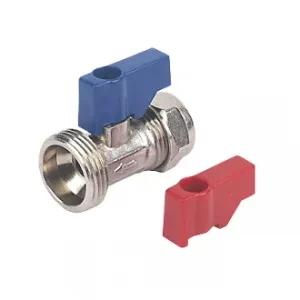
10- Washer Water Valves
Washer valves are common plumbing valves that are used for shutting off purposes. These water valves stop the water leakage and flow with a washer.
You can open and close washer valves by using a round handle. However, the problem with these water valves is that they usually wear out quickly and will not be able to properly shut off the water flow. When your valves wear out, you need to change them ASAP with a new one that has the correct size.
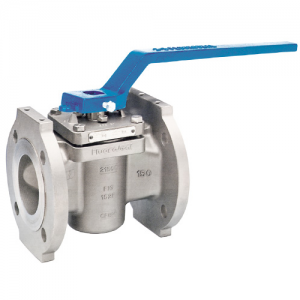
11- Plug Valves
Plug water valves usually feature cylindrical plugs that allow you to control water flow by rotating in the valve’s body. When these water valves are open, the water flows through the plug, and the water flow is blocked when you close it.
You can open and close plug valves with a handle.

12- Needle Valves are the Last Type of Plumbing Water Valves for Today
Needle valves are the last item in our complete list of the must-know types of plumbing water valves.
These plumbing valves have a small port and needle-shaped plunger, allowing the valve to have accurate and precise water flow regulations.
Needle water valves are usually used for applications that need a lower flow rate to maintain.























